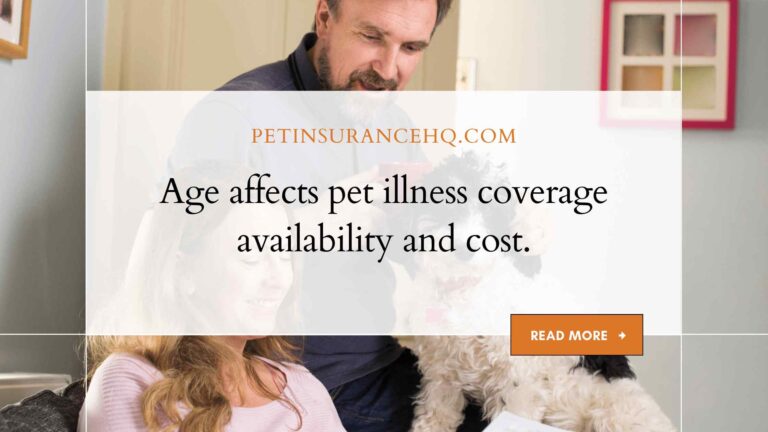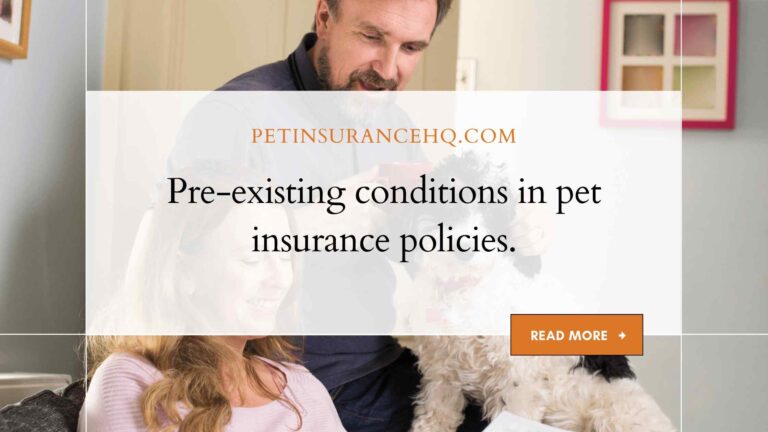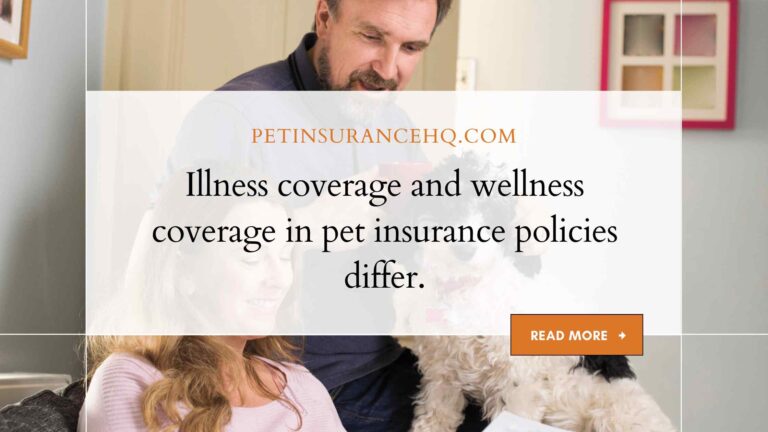How to choose the right illness coverage for your pet
Pets are more than just furry companions; they’re members of our family. And just like any family member, we want to make sure that they receive the best care possible when they fall ill. With so many options available, choosing the right illness coverage for your pet can be overwhelming. But don’t worry – we’re here to help!
In this blog post, we’ll guide you through everything you need to know about selecting the perfect insurance plan for your four-legged friend. From understanding what’s covered in a policy to tips on finding the best deals and providers, we’ve got you covered (pun intended!). So sit back, relax and let us help you find peace of mind knowing that your pet is protected no matter what happens.
Introduction to Pet Insurance
Your pet is like a member of the family, so it’s important to make sure they’re always well taken care of. That’s why pet insurance can be a great option for many pet owners.
Pet insurance can help offset the costs of unexpected veterinary bills, and it can give you peace of mind knowing that your pet is covered in case of an accident or illness.
There are a few things to keep in mind when choosing pet insurance, such as what type of coverage you need and what your budget is. We’ve put together a helpful guide to choosing the right illness coverage for your pet, so you can make sure your furry friend is always protected.
Benefits of Pet Insurance

When it comes to our pets, we want them to have the best of everything—the best food, the best toys, and the best medical care. But just like with human health insurance, pet insurance can be confusing. There are a lot of options out there, and it’s hard to know which one is right for your pet.
One way to narrow down your choices is to decide what type of coverage you want. Do you want an insurance plan that covers just accidents or illnesses? Or do you want a comprehensive plan that covers both?
Once you’ve decided what kind of coverage you want, you can start shopping around for the best pet insurance plan for your furry friend. To help you get started, here are a few things to keep in mind:
Accidents and Illnesses: Most pet insurance plans will cover accidents and illnesses. But make sure to read the fine print so you know exactly what’s covered. For example, some plans may not cover pre-existing conditions or hereditary conditions.
Pre-existing Conditions: Some pet insurance plans will not cover pre-existing conditions (Conditions that your pet has before you enroll in a policy). If you’re not sure if your pet has any pre-existing conditions, talk to your veterinarian. They can help you determine if your pet is healthy enough to be insured.
Types of Illness Coverage
There are a variety of illness coverage plans available for pet owners, and the right one for you will depend on a number of factors. The most important factor to consider is the type of coverage you need. There are three basic types of illness coverage:
- Major medical plans: These plans cover serious or life-threatening illnesses and injuries. They typically have high deductibles and co-pays, but they can offer peace of mind in knowing that your pet will be covered if something catastrophic happens.
- Limited medical plans: These plans cover less serious illnesses and injuries, and often have lower deductibles and co-pays than major medical plans. They can be a good option for pet owners who want some protection but don’t want to spend a lot on premiums.
- Wellness plans: These plans cover routine care, such as vaccinations, check-ups, and routine bloodwork. They typically do not cover illnesses or injuries, but they can help you save money on preventative care.
Once you’ve decided what type of coverage you need, you’ll also need to consider how much coverage to buy. This will depend on things like your budget and your pet’s health history. If your pet is healthy now, you may not need as much coverage as someone whose pet has chronic health problems.
Factors to Consider When Selecting Pet Insurance
There are a lot of factors to consider when selecting pet insurance, and it can be hard to know where to start. Here are a few things to keep in mind:
- What kind of coverage do you want? There are plenty of options out there, from basic plans that cover routine care to more comprehensive ones that cover accidents and illnesses.
- How much can you afford to spend? Premiums can vary widely, so it’s important to find a plan that fits your budget.
- What is your pet’s health history? If your pet has preexisting conditions, you’ll want to make sure they’re covered by your policy.
- What is your deductible? This is the amount you’ll have to pay out of pocket before your insurance kicks in. Higher deductibles usually mean lower premiums.
- What are the exclusions? Some policies exclude certain types of treatments or conditions, so it’s important to read the fine print before signing up.
Questions to Ask Your Veterinarian
As a pet owner, you want to do everything you can to make sure your furry friend is healthy and happy. Part of that is choosing the right illness coverage for your pet. But with so many options out there, it can be hard to know where to start.
That’s why we’ve put together a list of questions to ask your veterinarian when you’re considering which illness coverage is right for your pet. By getting the answers to these questions, you’ll be able to make an informed decision about what coverage is best for your pet.
- What illnesses does my pet need coverage for?
- What is the deductible for each illness?
- How much will I have to pay per month/year?
- What is the maximum payout per year?
- Does this policy cover pre-existing conditions?
- Are there any exclusions in the policy?
- How easy is it to file a claim?
- What is the reimbursement percentage?
Comparison Shopping for Pet Insurance
When it comes to your pet, you want to make sure you have the best possible coverage for their needs. That’s why it’s important to compare pet insurance policies before making a decision.
There are a few things you’ll want to keep in mind when comparison shopping for pet insurance. First, consider what type of coverage you need. There are policies that cover routine care, like vaccinations and check-ups, as well as policies that cover more serious illnesses and accidents.
Next, consider the deductible and co-payments associated with each policy. These can vary greatly, so it’s important to choose a policy that fits your budget.
Be sure to read the fine print carefully. Some pet insurance policies have exclusions or limitations that could impact your coverage. By taking the time to compare policies, you can be sure you’re getting the best possible coverage for your pet.
Understanding Policy Terms and Conditions
Pets are considered family members by many people, so when they get sick, it’s natural to want to do everything possible to make them better. Unfortunately, vet bills can be very expensive, and not all pet insurance policies cover every type of illness. Here’s what you need to know about how to choose the right illness coverage for your pet.
There are two main types of pet insurance: comprehensive and catastrophic. Comprehensive pet insurance covers routine care, like vaccinations and annual check-ups, as well as illnesses and accidents. Catastrophic pet insurance only covers illnesses and accidents, but has a lower premium than comprehensive coverage.
Most pet insurance policies have a deductible, which is the amount you have to pay out-of-pocket before the insurance company starts covering expenses. For example, if your policy has a $500 deductible and your vet bill is $1,000, you will pay the first $500 and the insurance company will pay the remaining $500.
It’s also important to understand co-insurance, which is the percentage of an eligible veterinary bill that you’re responsible for paying after meeting your deductible. For example, if your policy has 80% co-insurance and your vet bill is $1,000, you would pay 20% ($200) and the insurance company would pay 80% ($800).
Conclusion
Overall, choosing the right illness coverage for your pet is an important decision that can help provide cost-savings and peace of mind. It’s essential to do research on various companies and policies before deciding which one to choose as it will ensure you find the best coverage for your pet at the most competitive price. Taking into account factors such as eligibility criteria, insurer ratings and customer satisfaction reviews can all be used when weighing up what plan works best for you and your furry friend.







